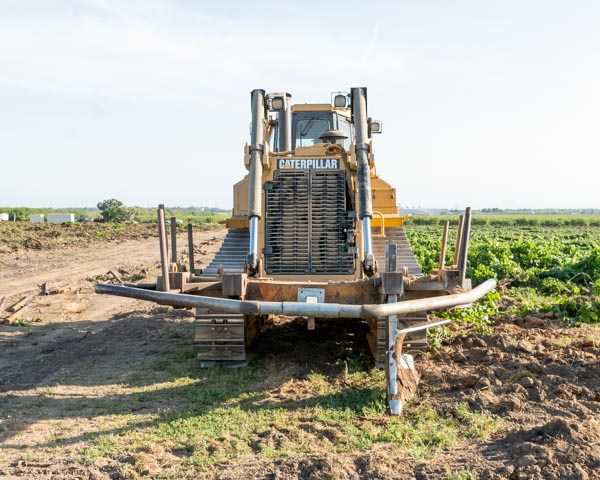
How to Remove a Vineyard and Prepare the Field for a New Vineyard.
Originally posted on https://excavationcalifornia.com/vineyard-removal/
Why would someone want to remove an existing vineyard?

There are several reasons that growers decide to remove and replace their vineyards. It is usually done by the commercial growers over time because of falloff in production that hurts expected financial target margins. Other reasons include having a grape varietal that is hard to sell because of lack of demand in the marketplace, disease, or sometimes just new owners not happy with row spacing, trellis type, existing drainage, etc. Every grower has a vision for their perfect vineyard and would prefer to not make costly mistakes along the way. Getting it right the first time in a fast, effective and efficient way will result in high quality results on time and on budget.
What steps are required to remove a vineyard?
The process of replacing a vineyard is easy once you know the steps to follow. When you understand the step involved, you can create a plan that makes the process efficient.
Here are 8 steps you can use for replacing your vineyard.
- Always call 811 (https://usanorth811.org/) for USA free underground utility location service before you dig in the field;
- The process begins with removing the irrigation drip lines in the planted area;
- Remove the anchors and end posts with a small excavator or mini excavator;
- Some contractors pull the vines one at a time with a mini excavator, but it is much faster, cheaper and more efficient to use customized vineyard removal equipment. We prefer to run a CAT D8 dozer down the rows with our custom-made attachment that cuts the roots below ground level and rolls the vines, stakes, and wire into win rows;
- Push all materials into burn piles using a CAT D8 equipped with a brush rake. Before burning, check your county’s burning regulations;
- Burn the piles and have a recycling facility pick up the posts, wire and any left-over metal scraps;
- The fields should now be walked by a hand crew to pick up all the remaining roots, debris, and especially wire. Wire left in the field causes costly damage to bulldozers.
How to prepare the field for the new vineyard.
Excavation contractors building a vineyard in California start with proper planning to deal with soil compaction issues and the chemistry of the soil. Before ripping process begins, the excavation contractor‘pot holes’ the field with a backhoe in a few locations. This is done to assess the depth of the hardpan layers; helping to determine the desired ripper shank length, the number of required passes over the field, and to collect samples of soil for testing. Soil testing helps determine the soil pH, along with other factors, and determines if additives such as pot ash, compost, lime or gypsum are required to adjust the soil to optimum conditions for planting the vineyard. After the deciding on the selected additives for soil remediation takes place, it is time to deep rip the soil according to the specifications resulting from the above testing.
Originally posted on YouTube by Excavating and Deep Ripping CA
Deep ripping the soil produces a uniform soil composition and drainage conditions that will allow the vineyard to thrive in optimum conditions to develop healthy deep root systems. In Northern California, the consultants tend to recommend having the fields are ripped two times in different directions (track on track) with a single shank equipped with a slip plow to a depth of 5 feet deep. The spreading of the amendments on the field can take place before or after deep ripping. The next step is to disc the field (usually two times) to break down the dirt clods and to mix the soil with the additives. The last step for the deep ripping contractor is to pull a tri-plane over the field to smooth and level the field for the berm and trellis placement, vine planting and installation of surface irrigation. Now that the field is now prepared with optimum drainage and soil conditions, the vineyard manager will work with their crews and other subcontractors to layout and construct the new stronger and healthier high-quality vineyard according to plan. We love great wine and fine wine starts with the highest quality grapes produced in a properly prepared optimal growing environment. Cheers!
A&L Services, Inc.
36445 County Road 31
Davis, CA 95616
530-219-3029
